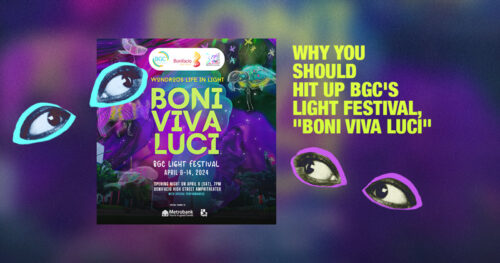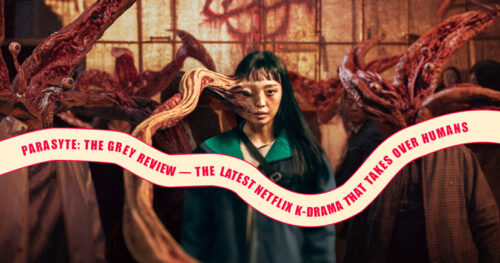With Jack In The Box, J-Hope sets his public persona aflame
Much as his name suggests, J-Hope’s personality shines with unrivaled optimism and warmth. Always smiling, energetic and playful, BTS’s main dancer and one-third of the producer-writer line joyfully embraced that image. In his tenure with BTS, J-Hope has always been a beacon of light not only to fans but to the members as well. His first release as a soloist, a colorful and vibrant mixtape called Hope World, is a body of work expected of J-Hope. But for Jack In The Box, he peels back all his layers and reveals the complexity and humanity of Jung Hoseok.
One wouldn’t expect the stark difference, especially upon seeing the colorful album art made by American artist Brian Donnelly, more known as KAWS. However, the South Korean artist surprised the world with the pre-release single called MORE. Donning an all-black utility suit and a black, floppy-eared Jester’s hat with smudged smoky eyeliner, this Jung Hoseok is starkly different than the one we all knew. With a moving bassline, crisp snares and heavy guitars, the punk-rock-laced MORE incorporates J-Hope’s expertise in hip-hop as he ruminates on the feeling of greed for success. However, the singer-rapper-dancer remains self-aware that it’s not the only thing a person needs in this life.
RELATED: 4 Things We Can Learn from BTS Taking A Break
The 10-track album clocks in a total of just over 20 minutes, rounding up a short but rich collection of social commentary and his own pensive moments. J-Hope flexes his creativity and musical muscle, whether it’s his variety of rap flows and the genres he explores. Sometimes we hear the choppy bars from his early foray with 1VERSE or the rhythmic rap-drawling plucked from Airplane—he effectively combines all to get the message across. After experimenting with punk-rock in MORE, the artist also throws it back to the 90s to the early 2000s, the sounds and styles he grew up with.
Jack In The Box starts with an Intro, where a disembodied voice narrates a popular story in Greek mythology. While Jack In The Box might allude to the toy consisting of a clown popping out of a box, J-Hope also references the final creature to come out of Pandora’s box: hope. The intro has a woman narrating a snippet from the story, specifically the last creature that exits the box from Zeus. It ends with, “Hope gave people the will to carry on living amidst the pain and strife.” It's a name he chose to bore the moment he named himself after it, along with the high expectations it yields.
The first half of Jack In The Box contains most of J-Hope’s social commentary. In STOP, alternately titled There Are No Bad People in the World, the rapper rants against societal ills and their perpetrators. (Which alludes a touch of old BTS, if I may.) But he immediately catches himself by finding a more profound reason behind it all. This perspective lightens a little in = (Equal Sign), where J-Hope pushes back against hatred and indifference, singing, “Hate'll paralyze your mind / Gotta see the other side / It costs ya nothin’ to be kind.” The song is reminiscent of 2000s-era Black Eyed Peas, where R&B hits weren’t always limited to romance and heartbreak.
RELATED: Why Fans Love BTS So Much
Jack In The Box gets split neatly in the middle with Music Box: Reflection. The dark and ominous instrumental shifts the focus from the world outside of the box to the entity within, to J-Hope. In the dark What If…, Ol’ Dirty Bastard’s Shimmy Shimmy Ya serves as the backdrop of Jung Hoseok questioning J-Hope. He interrogates his public persona about how things would still be the same without the money, the fortune and the fame. “Can you still tell people to love yourself and have hope / If it means all those things will be taken from you?” J-Hope also reevaluates life at the peak in Safety Zone. The reflective R&B track tells the story of struggling even at the top, the hardship in finding a place he can lay all his burdens down.
The album closes with Arson, a rhythmic masterpiece supercharged by J-Hope’s impeccable rap flows. What starts like a buzzing spark builds up to a large flame. Here, the rapper uses arson as a metaphor for his passion, setting everyone ablaze with a fire that never seems to burn out. The track drips with his drive and energy, the force that keeps him doing what he does and reinvent himself at each turn. “Addictive” can only describe Arson’s buildup that will leave you hungry for more. And the only way to satisfy that craving is to play Jack In The Box all over again.
RELATED: K-Pop Masterz Are Coming To Manila: BamBam, Jackson Wang, And TREASURE
With Jack In The Box, J-Hope sets his public persona aflame. He gathers all the layers, worries and expectations, shutting them down one by one, each hit fueling his passion. Through his first album, Jung Hoseok debuts anew as an artist: respected, revered and one to anticipate from here on out.
Art Matthew Ian Fetalver


















